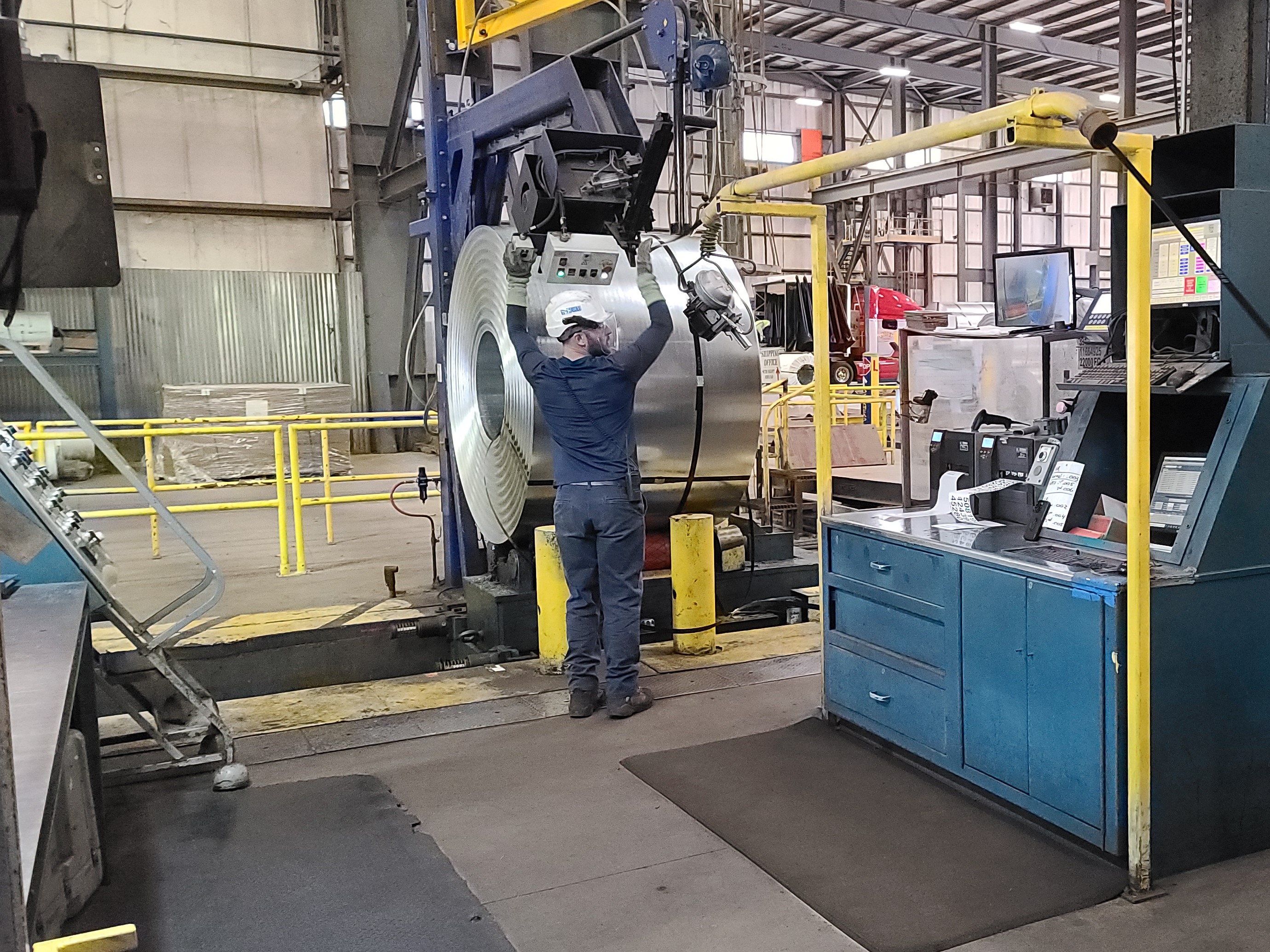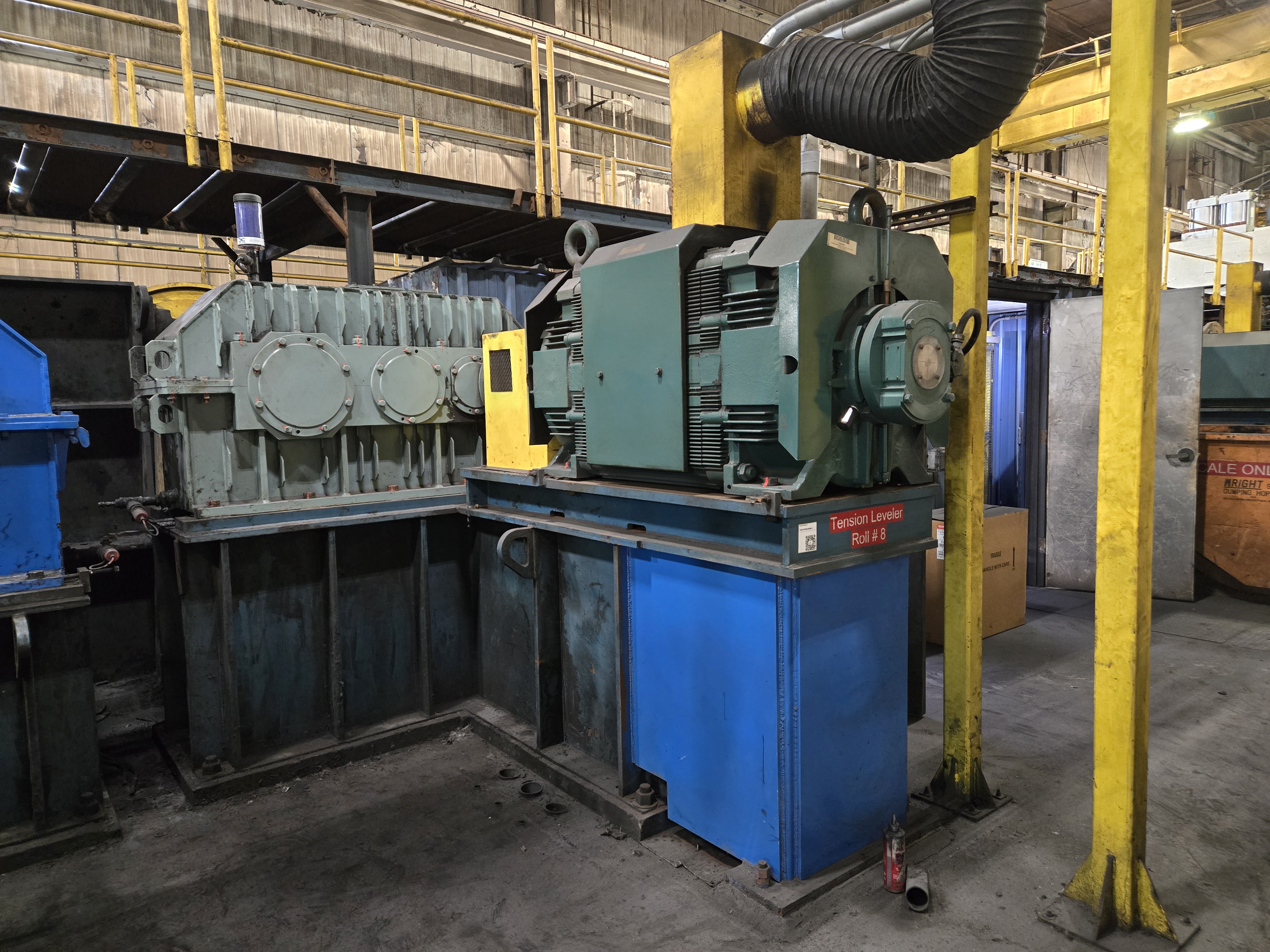
Transformation in Action: Extending Equipment Life with Predictive Maintenance
At Worthington Steel, improvement isn’t an occasional project; it’s part of how we work. Through Transformation, our continuous improvement system, teams use structured problem-solving, kaizen events and rapid experiments to test ideas, learn quickly and scale what works across our operations.
A recent effort at our Delta, Ohio, facility shows that mindset in action. The team advanced maintenance practices from responding to problems toward anticipating and preventing them – leading to gains in efficiency, customer reliability and employee safety.

Seeing Opportunities Sooner
Traditionally, maintenance has meant repairing equipment after a failure. At Delta, employees asked: What if we could spot issues earlier and complete fixes on our schedule?
By adding AI-powered sensors to critical equipment and applying analysis to vibration and lubrication data, the team can now track machine health continuously. The insights feed into plant dashboards, providing early warning signals and helping prioritize work before problems escalate. Instead of following a calendar or reacting to breakdowns, employees act proactively, making small adjustments that extend asset life, avoid costly interruptions and reduce potential safety risks that come with sudden breakdowns.

Proof in Practice
“One gearbox [a critical component that transfers power to keep steel moving down the line] was wearing out faster than expected,” said Jeremie Lieb, transformation manager, reliability and asset management. “By adjusting lubrication and improving filtration, we slowed the wear dramatically. That change added about three more years of useful life.”
In another case, early detection of a furnace roll bearing issue allowed the team to plan a repair during scheduled downtime. By addressing it early, they avoided nearly 48 hours of unplanned outage — a win that kept production on track.
So far, the program has extended the life of critical assets at Delta by about 12.5 years in total, proof that incremental changes add up. In 2025, Worthington Steel’s maintenance teams were recognized with the Makers Award from AssetWatch, a provider of AI-powered condition monitoring technology, for their role in advancing predictive maintenance. The recognition underscored that this wasn’t just about piloting new tools – it was about shaping them. That kind of innovation comes from the day-to-day work of our technicians who are willing to try new approaches and give honest feedback.
Jeremy Malak, Maintenance Manager
What's exciting now is how we're shifting that mindset. With data from sensors and analysis tools, we can plan ahead, fix issues before they cause downtime and save the team a lot of headaches."

What it Means on the Floor
For employees, the difference is more than numbers on a dashboard.
“Traditionally, maintenance has been about responding when equipment fails,” said Jeremy Malak, maintenance manager at Delta. “What’s exciting now is how we’re shifting that mindset. With data from sensors and analysis tools, we can plan ahead, fix issues before they cause downtime and save the team a lot of headaches.”
The improvements don’t just benefit employees; they also give customers more confidence in the reliability of every order.
Eric Waldron, plant manager at Delta, has seen the effect ripple across the line. “Reliability has continued to improve in recent years,” Waldron said. “Operators now have even greater confidence that equipment will run when they’re ready, which helps us stay on schedule and deliver consistently for our customers.”
Lieb added, “If I’m not enabling our people with better data, then I’m failing them. Our systems, training and strategy have to align to put our people first.”
.jpg?sfvrsn=aa974a84_2)
The Bigger Picture
Predictive maintenance is one example of how Worthington Steel applies Transformation to strengthen reliability and performance. Lessons learned at Delta are being shared across other plants, helping scale improvements companywide.
“Transformation isn’t about chasing the next tool; it’s about the discipline to scale what works,” said Andy Reich, vice president of Transformation. “As our CEO often says, ‘When we see something good, we double it. If something’s not working, we cut it in half.’ Predictive maintenance shows how that mindset delivers results.”
At Worthington Steel, Transformation isn’t an initiative. It’s how we do the work and how we make it better.
Jeremie Lieb, transformation manager, reliability and asset management, pictured right receiving an award from AssetWatch on behalf of Worthington Steel maintenance teams.
Andy Reich, Vice President of Transformation
Transformation isn't about chasing the next tool; it's about the discipline to scale what works."